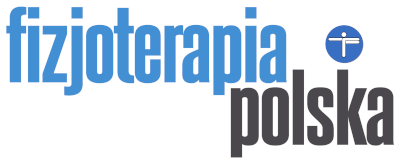Aleksandra Deljewska-Starykow, Zbigniew Śliwiński, Wanda Różyło
Aleksandra Deljewska-Starykow, Zbigniew Śliwiński, Wanda Różyło – Evaluating the motor development of infants using Vojta’s method, with particular attention to risk factors, in clinical material from a Rehabilitation Center for Children with Cerebral Palsy. Fizjoterapia Polska 2002; 2(3); 216-228
Abstract
Background. The author described child’s physical and mental development in the first year his live in Theodor Hellbrige’s opinion. They presented new definitions how „high-risk pregnancy, „high-risk birth, „high-risk child” They talked over risk factors and among of them there is of great importence famillie’s relations connected with the Rh factor, main blood groups, famillie’s enzynopathy and chromosome aberration also mather’s ilnneses during the her pregnancy. They payed special attention to the gestosis, diabetes, tyroid’s ilnneses, obesity, anemia, passed infectius and bleeding. The authors rated negative factors among low height of mather, low weigth of mather befor her pregnancy and no hygienic live. The period shorter than 6 months between the pregnancies is health risk also, and like how the inflammatory proceeses of the Central Nervous System, generalized cyanosis, low evaluation in the Apgar Scale, acidosis, hiperbilirubinamy, infantile convulsions, neonatal asphyxia, the children born after different complications related to labour.The aim of examine.• The neurophysiology analysis of the development newborn from the group high-risk pregnancy, high-risk birth, especially children which was born before 37 weeks lasting pregnancy – premature baby- and children which was born in normal labor but the size those newborn was too small to fetal age- dystrophy child• The paying attention to early diagnosis of the neurodeveloping disturbances and starting the treatment quickly.Material and methods. 32 premature baby was examine , it was the children were born between 28-37 weeks of the pregnancy and 13 dystrophy child which weight were 2 500 g. and 1 child was born after 37 weeks pregnancy. The examine was done in the Rehabilitation Center in Zgorzelec. Results and conclusions. On the basis of examine the authors drown following conclusions: 1. The Vojty’s development neurokinesiology diagnostic is good screening for children from risk groups, is simply to do and let to evaluate early child’s disturbances in psychomotorial development. 2. The bigger worth of the Vojtys diagnostic and therapy is possible right development of children from high-risk birth groups. The results which are presented prove to early start to diagnos and treat give children chance to right development. 3. The age of the child is of great importance for results and time of therapy. 4. The low weigth of labor and relative shorter time of live the child during the pregnancy have the influence for efficiency CNS and the level of disturbances central neurvous coordination. The low weigth and shorter pregnancy live the higher level disturbances central neurvous coordination is presented. 5. The risk factor has influence for time therapy to moment reached the normalization. The intermural dystrophy is worst than premature baby. The premature baby quicklier and large number reache the normal psychomotorial development.
Key words:
infantum Cerebral Palsy, Vojta, child physical and mental development
| Invalid download ID. |
Pobierz bezpłatnie artykuł w j. angielskim |

